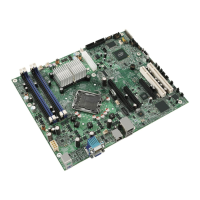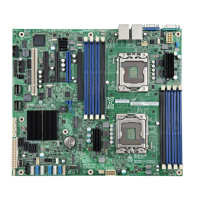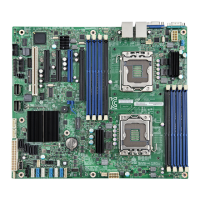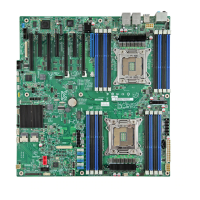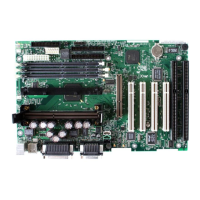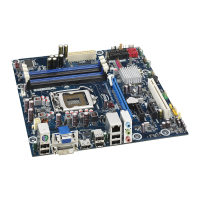Intel
®
Server Board S5000PSL 23
Upgrading the BIOS
The upgrade utility allows you to upgrade the BIOS in flash memory. The code and data in
the upgrade file include the following:
• On-board system BIOS, including the recovery code, BIOS Setup utility, and
strings.
• On-board video BIOS and other option ROMs for devices embedded on the server
board.
• OEM binary area
• Microcode
• A way to change the BIOS language
When you perform an upgrade to your BIOS, the upgrade is performed into a secondary
BIOS partition on specialized server board hardware. When you boot your server, the
system checks for an upgraded BIOS in this secondary partition. If it finds a BIOS
upgrade has been installed, it attempts to boot with the new BIOS. If it encounters a
problem with the upgraded BIOS, the system reverts to the BIOS that was in place before
the upgrade was performed. This provides a safeguard against problems that might happen
during the upgrade, such as a power outage during the upgrade process. This is called the
rolling BIOS feature.
<F9> Setup Defaults - Pressing <F9> causes the following to appear:
Setup Confirmation
Load default configuration now?
[Yes] [No]
If “Yes” is selected and the <Enter> key is pressed, all Setup fields are
set to their default values. If “No” is selected and the <Enter> key is
pressed, or if the <Esc> key is pressed, the user is returned to where
they were before <F9> was pressed without affecting any existing field
values.
<F10> Save and Exit - Pressing <F10> causes the following message to
appear:
Setup Confirmation
Save Configuration changes and exit now?
[Yes] [No]
If “Yes” is selected and the <Enter> key is pressed, all changes are
saved and Setup is exited. If “No” is selected and the <Enter> key is
pressed, or the <Esc> key is pressed, the user is returned to where they
were before <F10> was pressed without affecting any existing values.
Table 4. Setup Menu Key Use
Key to Press Description
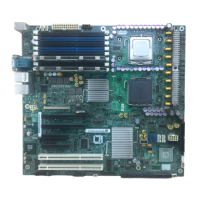
